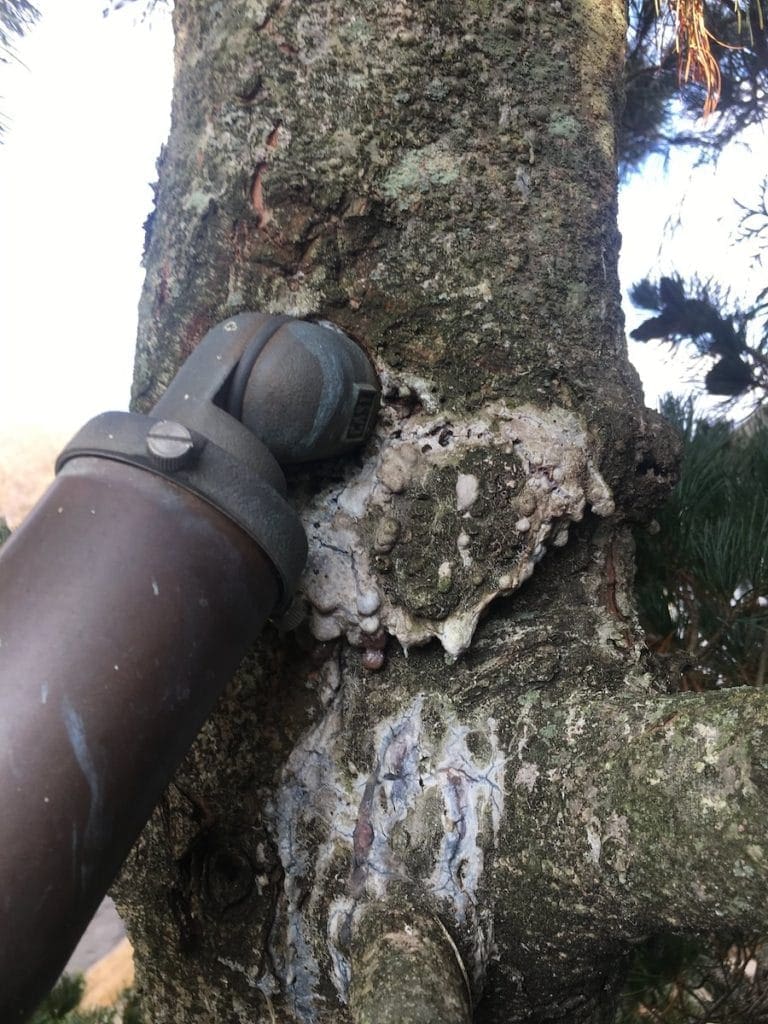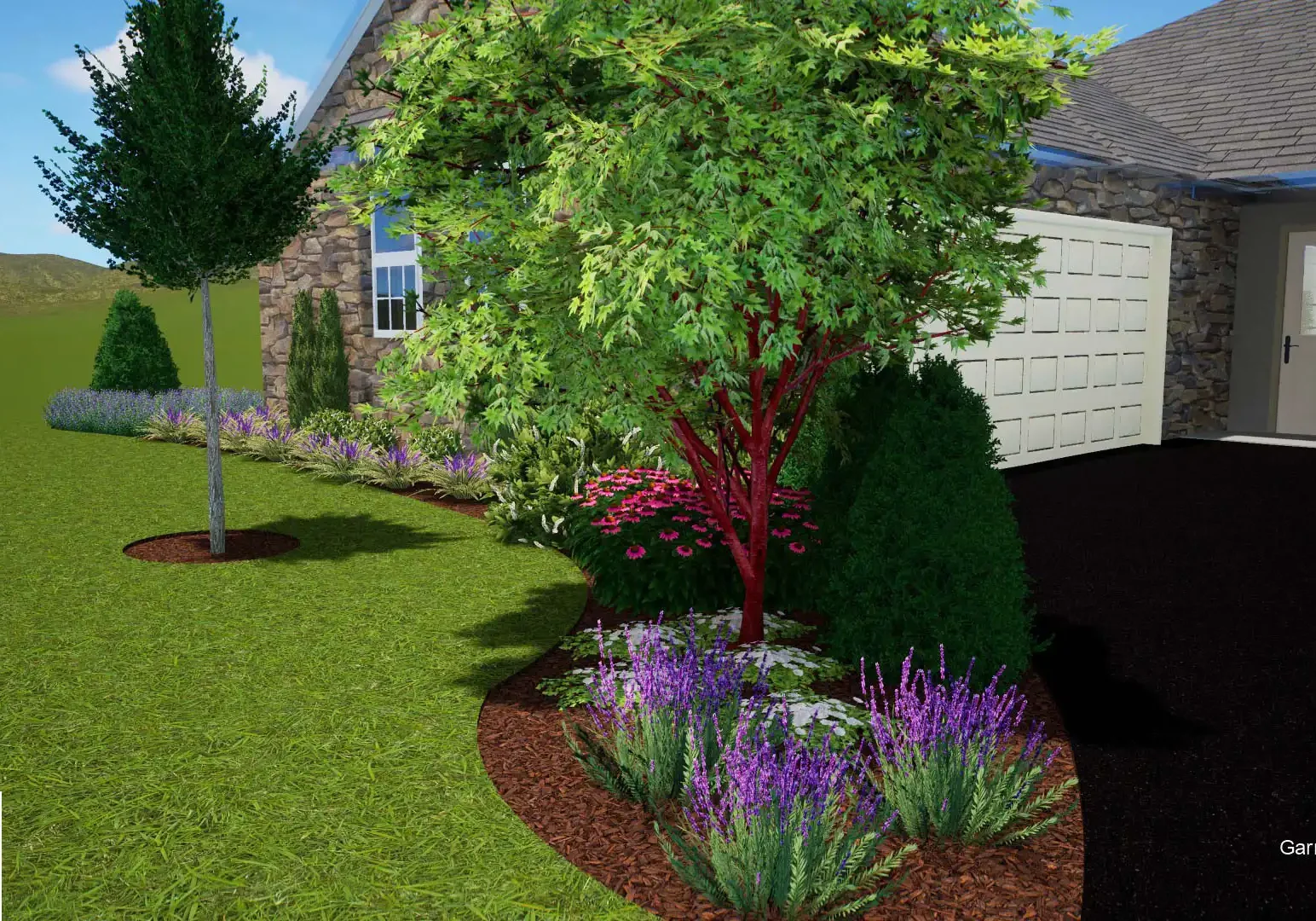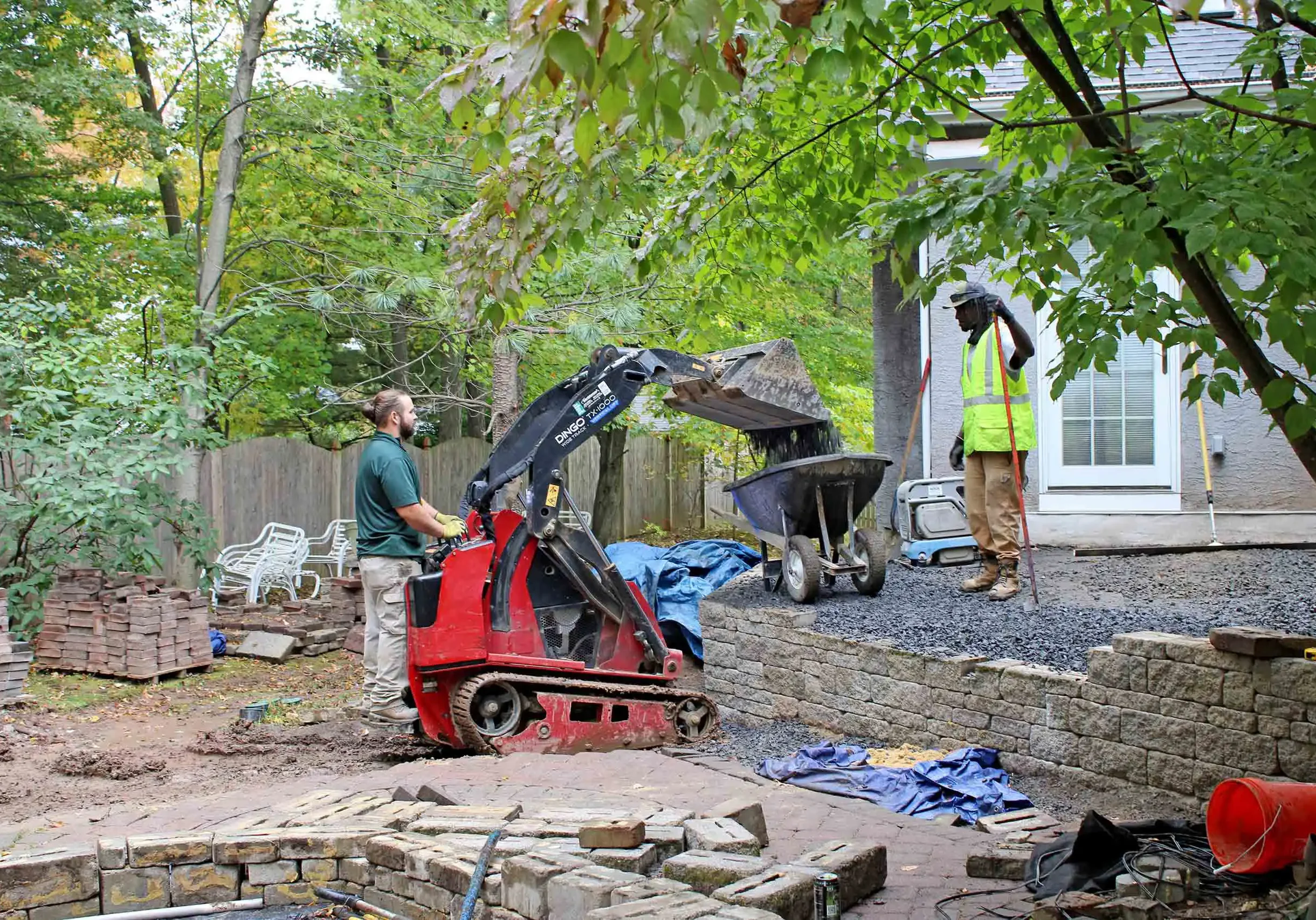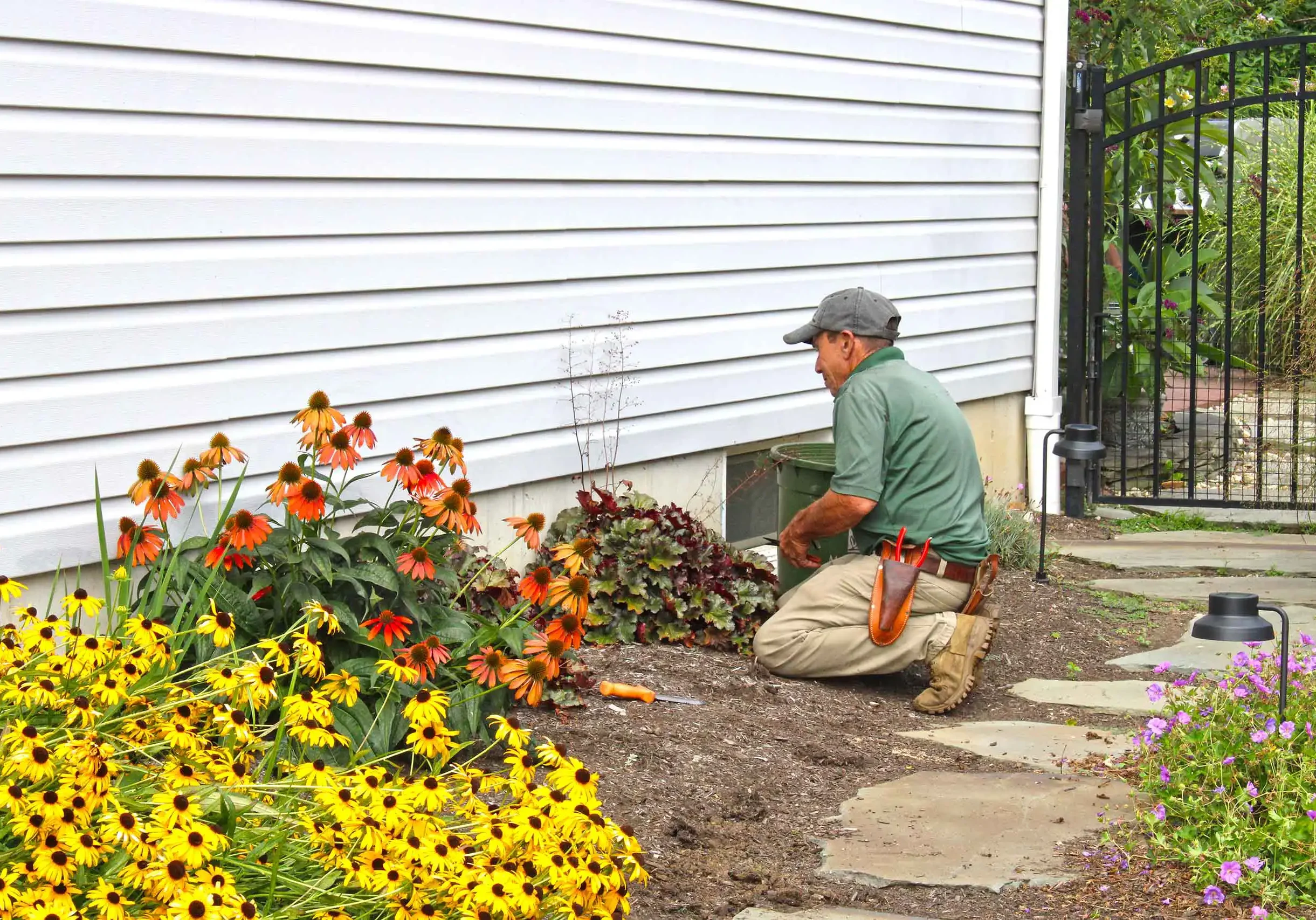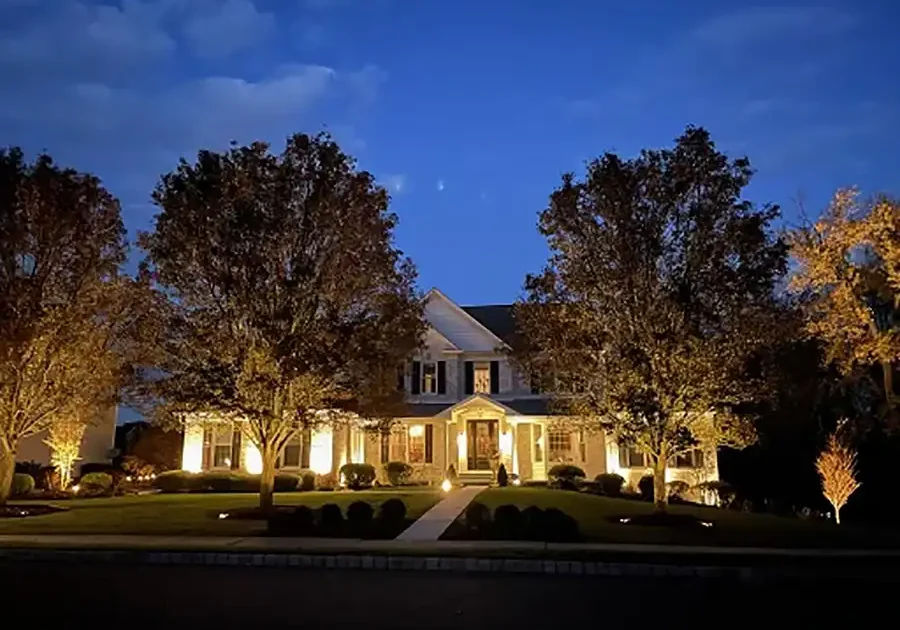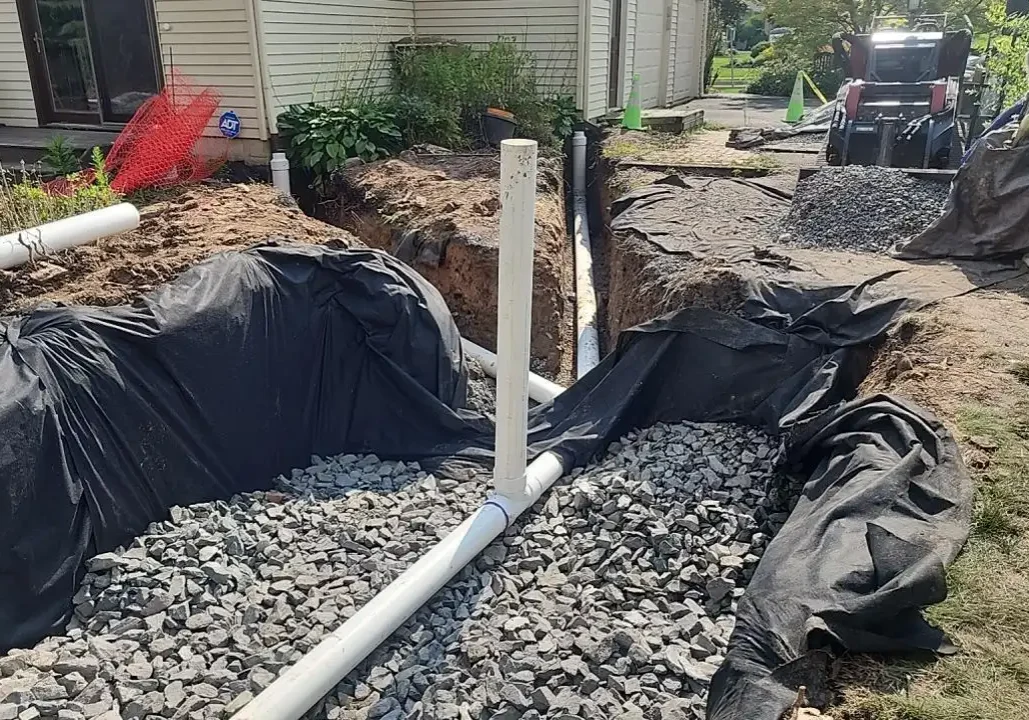If you have mature trees on your property, we can’t say enough about the effect that downlighting will create. With a good quality LED lamp in a 3,000 or higher kelvin temperature, you can create a soft light on the ground plane, casting shadows from the tree branches and mimicking actual moonlight.
Downlighting Maintenance, Then Vs. Now
Years ago, Garrett Churchill offered low-voltage landscape lighting maintenance plans, with limited success. The overall scope of the plan was to clean lenses on the lights, replace any bad lamps, and adjust the fixtures.
With LED lamps, the replacement interval has increased substantially, but there is still need for adjustment and lens cleaning to get the most from your lighting. Cleaning removes mulch, dirt, and lime stains, which are more prevalent if you have an irrigation system.
There may also be a need for adjusting fixtures, even changing location slightly to account for plant growth or adjusting the angle of the fixture.
Adjustment is particularly important when it comes to down lights or moon lighting. As the tree grows, it can grow around the fixture, creating all kinds of problems. In addition to the fixture itself, you need to consider the cable that provides power for the light. If there isn’t enough slack on the cable and it’s not free to move in its attachment points, the cable will become stretched beyond its limits much sooner than it should be, and ultimately will snap.
Assessing The Damage Once It’s Been Done
That’s exactly what happened to our client’s downlighting installation. It had not been properly maintained, and a cable was stretched so tightly that it had snapped. In a number of locations on the trunk of the tree, the tree had grown over the wire where it had been previously secured.
Unfortunately, the tree had also grown over the mounting flange for the light. “Digging” it out of the tree would have caused more damage than good, so that meant we had to replace the fixture and the cable. Lucky for us, it just so happened that the client had recently lost another tree on their property, and there was a spare fixture we could use to avoid the cost of purchasing a new one.
Depending on the fixture, we will generally use three stainless steel anchors to secure the lights to the tree. They have a course thread on the tree side, and a fine thread on the fixture side. Two nuts allow the fixture to be spaced away from the tree at the time of installation, allowing for tree growth for up to a few years without any need for changes or modifications.
As the tree matures, the fixture needs to be moved further out on the anchors to be kept away from the tree. This means the installation needs to be evaluated from time to time. Once there is no more adjustment on the anchor, the anchors may be backed out of the tree to adjust for the growth, or new anchors need to be installed.
At the end of the day, landscape lighting fixtures require regular maintenance if you want to extend their life. The longevity of your installation is dependent upon frequent checks, adjustments, and movements as necessary, in addition to cleaning.
